Corsair Force Series 100GB SandForce 1200 SSD Review
A Closer Look & Test System
It’s always fun to have a peek at the guts and we are more than happy to crack open the Corsair Force Series 100GB SSD so you don’t have to. We’ve said it before but again we’ll warn everyone not to disassemble their drive. Not only will it void your warranty but you run the risk of damaging some of the sensitive internal components.
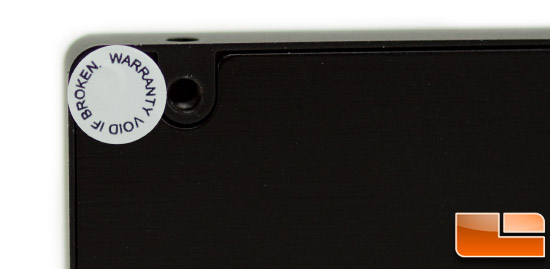
In case you forget, there are nice stickers over the screw holes to remind you.
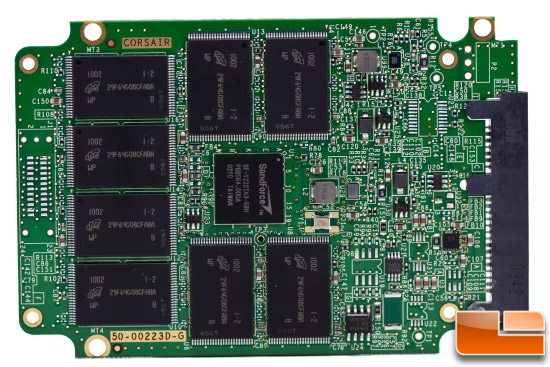
Peeking inside, the Sandforce SF-1200 controller lies more or less in the middle of the PCB flanked by the Micron MLC-NAND flash chips. Notably absent is the DRAM cache which is unneeded due to Sandforce’s DuraClass technology. The cost of the controller is partially offset by the lack of dedicated DRAM which is good because Sandforce controllers are not cheap. We’ll see if the absence of this has an impact on performance but this is the reason for the 100GB capacity rather than the 128GB physically on the drive. The layout is the same as other Sandforce-based SSD’s we have seen recently but if you look closely, visible is the Corsair brand along the PCB’s edge.
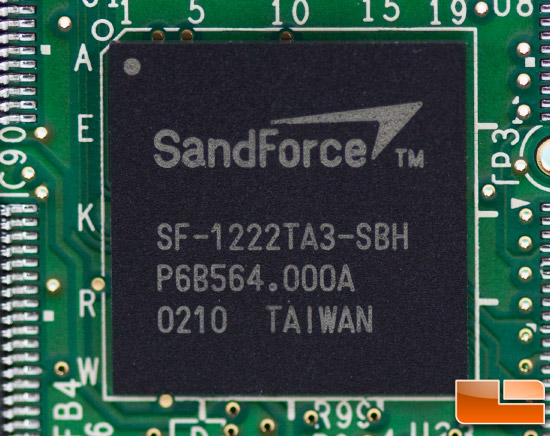
The SF-1200 controller is significantly less expensive than the SF-1500 which is intended for enterprise level drives. So much so that some manufacturers have abandoned drives based on the SF-1500 intended for consumers because the price for the drives were just too out of reach for the vast majority of consumer enthusiasts. Importantly, it does support TRIM for Windows 7 users and firmware upgrades. Garbage collection (NAND laundering) is also supported independent of the OS used. Sandforce lists this controller as capable of 260MB/s sequential read and write performance with a MTTF of 2,000,000 operating hours.
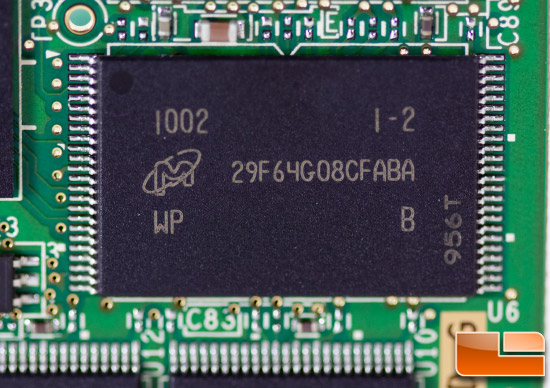
The 8GB density Micron MLC-NAND flash chips are arranged in a horseshoe pattern around the controller and mirrored on the back side of the board for a total of 16 chips and 128GB capacity.
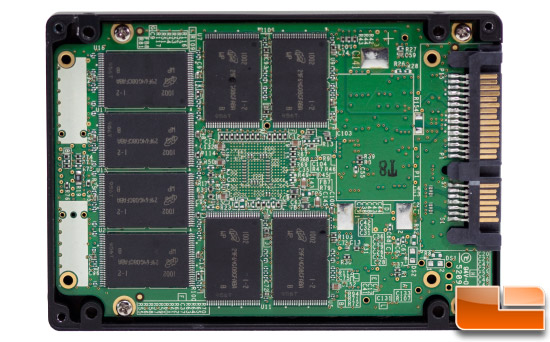
TEST SYSTEM
All tests were performed on a fresh and up to date install of Windows 7 x64 with no
other applications running using AHCI mode set through the BIOS. The
Asus P6T motherboard uses a ICH10R south bridge chipset which supports
TRIM. In between every test, the drive was wiped completely (written to in all 0’s or FF) and left for at least 20 minutes to ensure the TRIM function had time to do its job. As such, all results should be indicative of optimal performance. All
components were set to their default speeds. The components used are listed below:
| Intel LGA 1366 Test Platform | |||||
|---|---|---|---|---|---|
|
Component |
Brand/Model |
Live Pricing |
|||
|
Processor |
Core i7 920 | ||||
|
Motherboard |
ASUS P6T Deluxe V1
|
||||
|
Memory |
12GB OCZ Gold DDR3 1600MHz
|
||||
|
Video Card |
ATI Radeon HD 5970 |
||||
|
Hard Drive |
OCZ Vertex 30GB |
||||
|
Power Supply |
Corsair HX1000 |
||||
|
Operating System |
Windows 7 Pro 64-Bit |
||||
As you can see from the readout on CrystalDiskInfo, S.M.A.R.T. is enabled, as is TRIM. This is a great tool to see what version of firmware the drive is running as well in the event there are updates available.
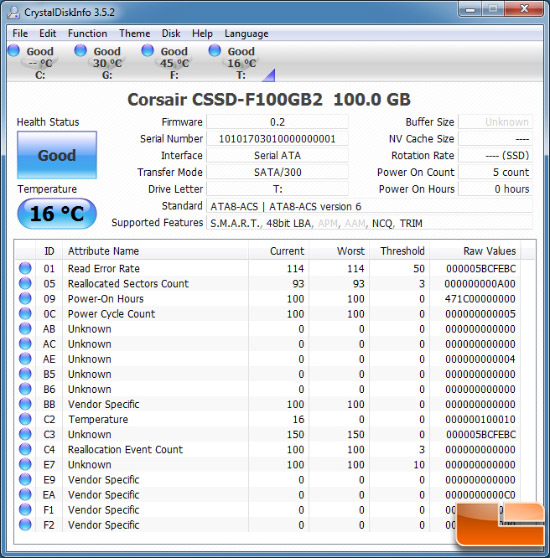
Intel recently released an update to its Rapid Storage Technology (RST) (version 9.6.0.1014) which is said to increase performance on some drives. I ran all of the benchmarks before and after the update and didn’t see a discernible difference in the outcomes.
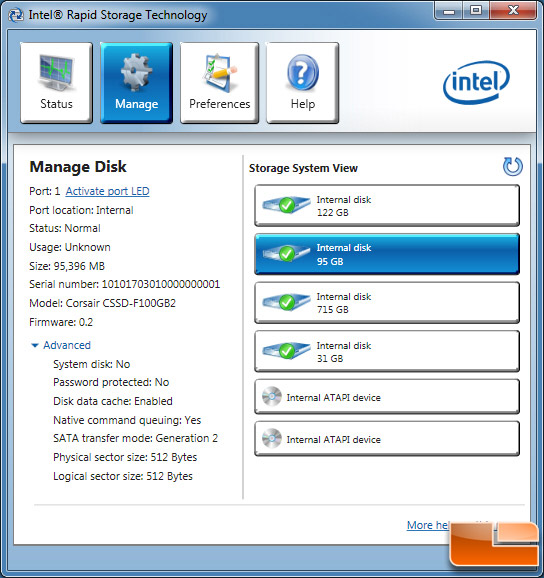
On to the benchmarks!

Comments are closed.